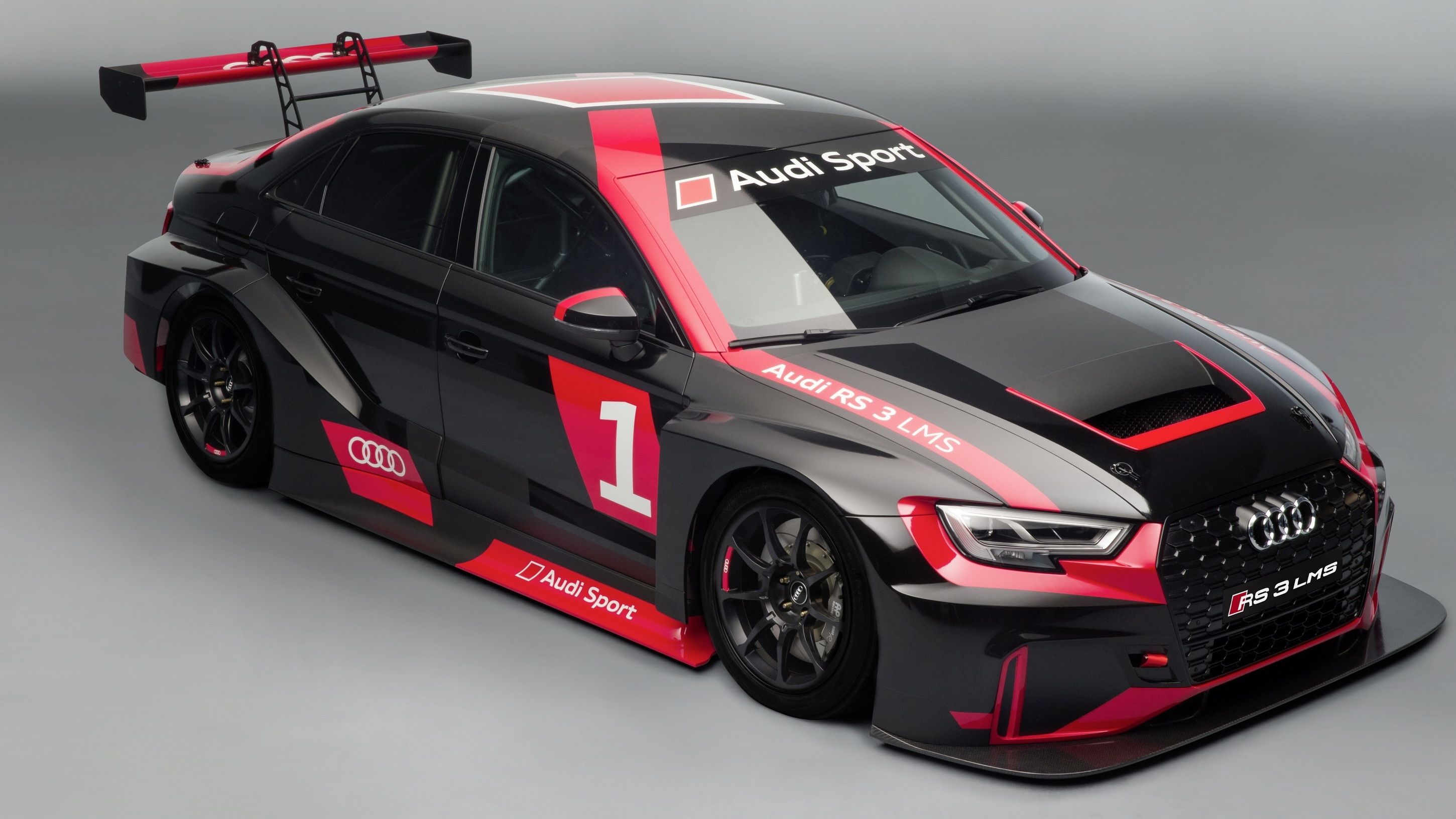Audi is offering a fresh racing car for apex-oriented customers with the new track-ready RS3 LMS, transforming the updated four-door sedan into a bona fide competition vehicle. The RS3 LMS joins the Audi R8 LMS in the automaker’s lineup of out-of-the-box grid stars.
The Audi R8 LMS was first introduced in 2009, offering privateers a chance to rocket around in genuine GT3 style at events like the 24 Hours of Nurburgring. However GT3 racing is expensive, and as an alternative, the RS3 LMS arrives primed and ready for the TCR International Series, which is considered a more cost-effective entry to the world of touring car racing.
Drawing on experience gained in such high-profile series as the FIA World Endurance Championship (WEC) and Germany’s Deutsche Tourenwagen Masters (DTM), the RS3 is outfitted with all the usual go-faster goodies. The suspension was massively upgraded, while large wheels and enormous brakes were fitted in the corners. The fenders were hugely flared, and new aero keeps it planted.
Inside, it’s all business, all the time, with a back-to-basics layout, carbon-fiber steering wheel, and digital instrumentation.
Behind the polished rings on the grille, you’ll find a 2.0-liter four-cylinder TFSI engine that’s turbocharged to 330 horsepower. Acceleration looks like 4.5 seconds to hit 62 mph from a standstill, while top speed is rated at roughly 150 mph. Interestingly, that’s quite a bit slower than the road-going RS3, which uses a 2.5-liter five-cylinder engine to make 400 horsepower and hit 62 mph in 4.1 seconds, with a top speed of 174 mph.
But don’t worry – this thing will still melt your face in the corners, and as such, it needs to be safe. That means it’s got an FIA-spec fuel tank, safety cell, PS3 safety seat, FIA-approved window nets, and a rescue hatch in the roof.
Continue reading for the full story.
Why It Matters
First things first – it’s kinda weird that the race-spec RS3 is slower in a straight line than the road car, right?
Not really. This thing is made specifically for competition in TCR, which means its gotta follow strict rules as far as output is concerned. And like I said before – it’ll still carry plenty of momentum in the bends.
Moving on, I bet more than a few of you out there have never heard of the TCR International Series. That’s probably because it’s so new, with its inaugural season launching just last year.
But even though it’s so new, it seems to be growing, holding events across the world, including as a support series for Formula One. Additionally, the 24 Hours of Le Mans now includes TCR classes.
According to Chris Reinke, chief at Audi Sport customer racing, “The TCR market has even larger potential than that of the GT3 category. In 2016, there were 10 TCR series with races in 18 countries, and more and more series are being added.” Not only that, but says TCR is branching out into areas where GT3 racing dares not tread.
So exactly how cost effective is this thing? Pricing starts at 129,000 euros ($144,750 at current exchange rates, 09/29/2016) should you get yours equipped with a sequential six-speed racing gearbox. For that price, you get a car that’s ready to roll in TCR, but if it’s just a bit too pricey for your bank account, you can opt for the club sport variant instead, which sells for 99,000 euros ($111,090).
Deliveries are slated to begin in December, just in time for the 2017 TCR season.

